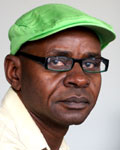"Spectrum is a very complex issue. The amount and use of spectrum is constrained by the international agreements and by domestic commitments, and bands for analogue broadcasting are now being opened to other uses," Fabio Leite, ITU deputy director for radio telecommunication bureau, said yesterday, Tuesday 4 October 2011.
Become crowded
Leite, who was speaking at the Radisson Blu Hotel in Johannesburg at the 42nd International Institute of Communications Conference (Twitter hashtag #iic2011), admitted that the spectrum environment has become a crowded area as more and more companies are requesting access to the orbit.
It is believed that worldwide the public sector, including defence ministries and security agencies, is sitting with over 40% of spectrum - some used and some unused - worth more than US$100 billion.
MultiChoice technical operations manager for R&D Gerhard Petrick said a fast-changing ecosystem means that spectrum is increasingly in demand - a massive demand in some bands - and the 'value' of spectrum now varies, depending on band and demand, and discrepancies in communications services vs broadcast service.
According to a Cisco forecast report, mobile Internet users in Africa and the Middle East will increase by 90 times in 2015 and data traffic will grow at 130% per year. The report said the balance of data traffic in the region will match the balance of voice traffic and be mobile, making 3G and LTE networks critical for broadband everywhere, especially in Africa.
"Huge growth opportunity"
"This is a huge growth opportunity," said Dr Martin Cave, visiting professor at the UK's Imperial College Business School.
To rise to these challenges, Dr Cave suggests that traditional methods (allocation and assignment by command and control) should be implemented, which he said includes the following:
Severely congested
However, as spectrum sharing between broadcasting and mobile services seems problematic - as Petrick put it - the industry calls for greater spectrum efficiency to make up for a severely congested spectrum space.
"The broadcasting industry cannot grow without digitisation," Petrick warned.
Brazilian-born Leite said one of the ITU's key issues include producing global standards, recommendations, reports and handbooks for wireless radiocommunication systems and applications (eg mobile, broadband, digital TV, intelligent transport systems, satellites and radar).
The purpose, he said, was to foster economies of scale, interoperability and global roaming. "You must remember that we also preserve some spectrum for emergency purposes, such as distress and safety applications," he said.
Balanced between unlicensed and licensed
Paul Mitchell, Microsoft senior director for technology policy, said there should be a balance between unlicensed spectrum and licensed spectrum, adding that one has to figure out what can be used and cannot be used.
Petrick urged the industry to ensure an efficient spectrum dividend through a harmonised implementation, and a deployment in line with claims made for access to spectrum.
"A large area coverage should be provided and priority areas, including remote areas, should be served first," he said, adding that the cost of wireless connectivity must decrease.
Table of countries that adopted DTT and year of adoption
| Country | Start of DTT |
|---|---|
| UK | 1998 |
| Sweden | 1999 |
| Spain | 2000 |
| Finland | 2001 |
| Switzerland | 2001 |
| Germany | 2002 |
| Belgium | 2002 |
| Holland | 2003 |
| Italy | 2003 |
| France | 2005 |
| Denmark | 2006 |
| Austria | 2006 |
| Greece | 2006 |
| Norway | 2007 |
| Portugal | 2008 |
| Ireland | ? |
Source: Phil Laven, DVB Project office, DVB World 2011, Nice, France, 7 March 2011
